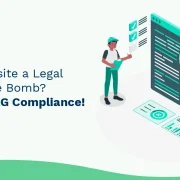
Strategies for Developing Digital Content that Resonates with Your Audience
Building relevant digital content continues to be one of the most effective ways to engage with consumer audiences today. A growing number of industries are leveraging digital content creation to connect with their audiences in some form or another.
For example, a technology brand may engage with its consumers and seed brand recall via engaging content on social media marketing content and messaging apps. On the other hand, it may also use digital content to build up employee branding to attract valuable new hires. The platforms and messaging for both outcomes may radically differ, but both leverage content as a medium to build conversations.
As we can see, the audiences may vary, but there is no doubt that companies must shape their content strategies to resonate with their audiences. However, according to a global survey of marketers conducted in 2022, 52% said their content marketing strategy was unsuccessful.
In this blog, we explore how adopting a custom content development approach can help businesses shape their digital content creation strategy and keep up the momentum of audience engagement.
1. Build an Omnichannel Content Strategy
Today, consumers are engaging on more channels than ever before. Digital has disrupted the game. A study indicates that marketers who used just one channel saw a 5.4% engagement rate. On the other hand, those who leveraged three to four channels had an 18.96% engagement rate, while the average order value was 13% higher.
Businesses need to understand where their customers are present and ensure custom content development. A one-size-fits-all approach no longer works because customers consume content according to their respective social platforms, gaming apps, ecommerce platforms, and more.
2. Make EBooks a Part of Your Offering
With more consumers switching from paper books to eBooks, businesses are advised to leverage eBooks as a marketing tool. In 2022, the worldwide eBook market was valued at $ 19.95 Billion. It’s expected to grow at a 4.32% compound annual growth rate to reach $ 32.19 billion by 2032.
EBooks are produced by publishers and K12 educators and used by brands to create stories around their brand history, vision, mission, impact, and milestones. EBooks can also be used innovatively to build excitement in audiences. For instance, they can work as free giveaways for a marketing campaign during a new product launch.
3. Automate Various Process
With so much content generated daily, companies need the right tools to help them manage digital content creation and distribution at scale. A critical step in this direction is identifying the right tech stack to help automate the key processes – design, publishing, upgrading, and distributing products. For instance, digital publishing software gives content creators and managers access to a single, unified platform to streamline content creation and distribution workflow.
Content creators can save and categorize content into catalogs while categorizing recipients into various groups. Legacy content can be institutionalized and shared with multiple stakeholders, such as consumers, employees, shareholders, partners, and authorities.
4. Repurpose Content to Be Interactive & Accessible
Marketing and content development teams spend extensive time in fresh digital content creation, which requires time and effort and comes at a high cost. However, there’s merit in repurposing old content by updating it and republishing. Today, it’s easy to repurpose content, especially with the right publishing tech suite.
For instance, today’s state-of-the-art conversion services make it easy to repurpose a whitepaper or eBook in a PDF format into an ePUB3 file, which comes with interactive functionalities. EPUB3 format allows content creators to embed multimedia content, and consumers can change the font with a single touch. Hence, it also enables older content to be more interactive and accessible.
5. Ensure Secure & Seamless Distribution
A key concern of businesses is the lack of security when distributing content to authorized users. Digital publishing platforms are equipped with a digital rights management system, which helps companies securely distribute their content, preventing it from being plagiarised and duplicated.
Say a market research company publishes business-to-business trend reports, which businesses leverage to collect market intelligence and grow their revenues. The digital rights management system enables them to distribute the reports only to authorized clients. It allows secure monetization of the product without the fear of duplication and loss of revenues.
Companies can also securely share sensitive content with stakeholders, such as regulatory bodies or shareholders, through digital publishing platforms instead of traditional email channels.
6. Take Data-Driven Decisions
Another valuable and non-negotiable strategy is to leverage data to make better content-related decisions. However, the inability to collate data and automate data processing stands in the way. Digital publishing platforms come equipped with state-of-the-art data assimilation and processing.
Content creators can customize dashboards based on their specific interests. Understanding aspects such as peak traffic times, rate of engagement with various pieces of content, and geographical breakdowns, can help businesses shape their content strategy based on real-time audience needs. They can gauge audience interests, habits, and patterns and create content that mirrors these trends.
The Takeaway
Today, much research points to the fact that businesses, irrespective of size, can leverage content to foster brand awareness, educate their audiences, and accelerate revenue growth. Many advertisers also find that content-led advertising is more effective for brand engagement.
Hence, companies must build sustainable content development and distribution operations early to capitalize on the digital content creation wave. Teams need access to the right tech stack to produce and distribute content at scale.
Access to the right digital content publishing tools helps streamline the process and enable data-driven content decisions. It can help content teams build a continuous engagement pipeline with audiences, with content at the center.
If your business is looking to revamp its content creation and distribution strategy, Hurix Digital is geared to support you in meeting all your company’s content creation needs. Our state-of-the-art digital publishing platform is available as a licensed version (one-time buy) and via a subscription model.
Get in touch with us to start a conversation.

Passionate about developing innovative business models for customers in the content space. Primarily focused on the markets: US, UK, Europe, Middle East and APAC with 18 years of experience. Focused on collaborative working with internal teams such as Technology, Operations, Finance, and Marketing to ensure the voice of the customer is in everything that the company builds.




